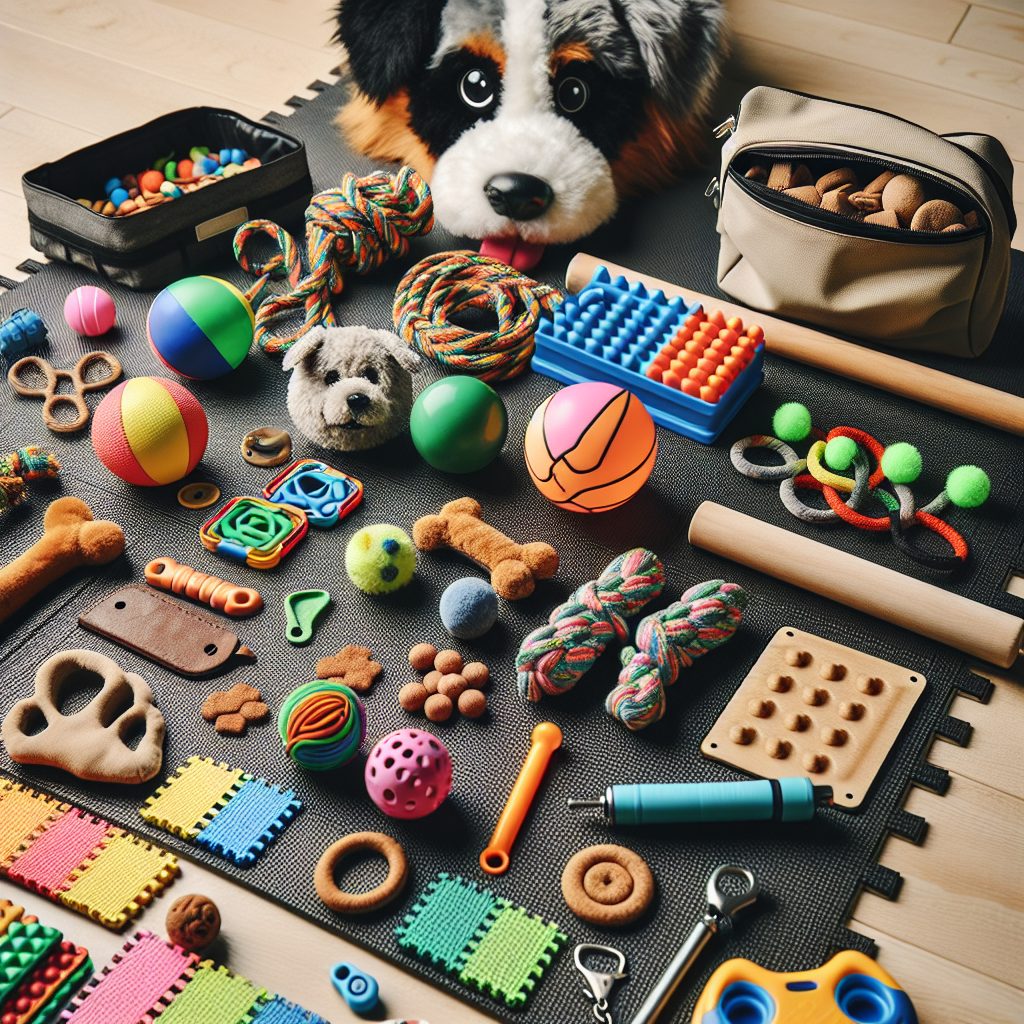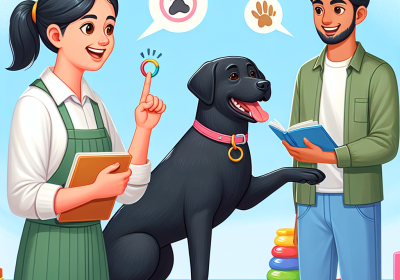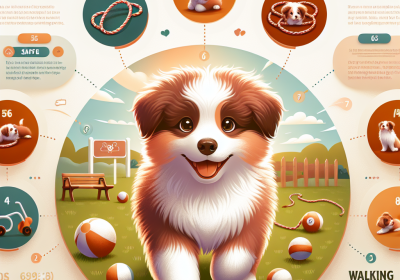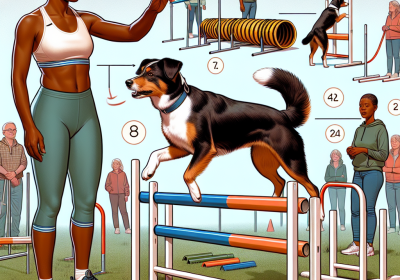Equipment and Tools for Dog Freework
Table of Contents
Dog Freework is an innovative and engaging approach to canine training and enrichment that emphasizes the use of various equipment and tools to stimulate a dog’s physical and mental abilities. This method encourages dogs to explore their environment, solve problems, and develop confidence through a series of structured activities. Essential equipment and tools for Dog Freework include agility tunnels, balance discs, wobble boards, scent detection kits, and interactive toys. These items are designed to challenge a dog’s coordination, balance, and sensory perception, providing a comprehensive workout that enhances their overall well-being. By incorporating a diverse range of equipment, Dog Freework offers a dynamic and enjoyable way for dogs to stay active, mentally sharp, and emotionally fulfilled.
Essential Tools for Effective Dog Freework Training
Dog freework, a dynamic and engaging form of canine training, requires a variety of equipment and tools to ensure both effectiveness and safety. This method, which emphasizes the dog’s freedom to explore and interact with their environment, can significantly benefit from the right tools. To begin with, a sturdy and comfortable harness is indispensable. Unlike traditional collars, harnesses distribute pressure more evenly across the dog’s body, reducing the risk of injury and allowing for greater control during training sessions. A well-fitted harness ensures that the dog can move freely without discomfort, which is crucial for maintaining their focus and enthusiasm.
In addition to a harness, a long training lead is essential. These leads, typically ranging from 10 to 30 feet, provide the dog with ample space to explore while still allowing the handler to maintain control. The length of the lead can be adjusted based on the training environment and the specific exercises being performed. This flexibility is particularly useful in open spaces where the dog can roam more freely, yet still be safely tethered. Moreover, the use of a long lead helps in teaching recall commands, as it gives the dog the opportunity to move away and return on command, reinforcing obedience and responsiveness.
Another critical tool for dog freework is a set of interactive toys. These toys, which can include treat-dispensing puzzles, tug ropes, and fetch balls, serve multiple purposes. They not only keep the dog mentally stimulated but also provide positive reinforcement during training. When a dog successfully completes a task or follows a command, rewarding them with a toy or treat can significantly enhance their motivation and engagement. Furthermore, interactive toys can be used to create various training scenarios, encouraging the dog to think critically and solve problems, which is a core aspect of freework training.
Additionally, portable agility equipment can be highly beneficial. Items such as collapsible tunnels, weave poles, and jump bars can be easily set up in different environments, providing a versatile training experience. These tools help in developing the dog’s physical agility, coordination, and confidence. By incorporating agility exercises into freework sessions, handlers can create a more comprehensive training regimen that addresses both mental and physical aspects of the dog’s development.
Furthermore, a clicker is a valuable tool for marking desired behaviors. Clicker training, a form of positive reinforcement, involves using a small device that emits a distinct sound when pressed. This sound serves as an immediate marker for correct behavior, followed by a reward. The precision of the clicker helps in clearly communicating with the dog, making it easier for them to understand which actions are being rewarded. Over time, this method can significantly improve the dog’s learning speed and accuracy.
Lastly, it is important to have a variety of treats on hand. High-value treats, which are particularly appealing to the dog, can be used to reinforce positive behavior and maintain their interest during training sessions. The type of treat can vary based on the dog’s preferences and dietary needs, but it is crucial that they are small, easily consumable, and nutritious.
In conclusion, the effectiveness of dog freework training is greatly enhanced by the use of appropriate equipment and tools. A combination of a comfortable harness, long training lead, interactive toys, portable agility equipment, clicker, and high-value treats can create a well-rounded and engaging training experience. By carefully selecting and utilizing these tools, handlers can ensure that their dogs remain motivated, safe, and responsive throughout their freework training journey.
Choosing the Right Equipment for Safe Dog Freework

When engaging in dog freework, selecting the appropriate equipment is paramount to ensuring both the safety and effectiveness of the activity. Dog freework, a practice that allows dogs to explore and interact with their environment freely, requires careful consideration of the tools and equipment used. This ensures that the dog remains safe while also maximizing the benefits of the activity.
To begin with, the choice of a suitable harness is crucial. Unlike traditional collars, harnesses distribute pressure more evenly across a dog’s body, reducing the risk of injury. A well-fitted harness provides better control and comfort, allowing the dog to move freely without strain. It is essential to select a harness that is adjustable and made from durable materials to withstand the rigors of freework activities. Additionally, reflective strips on the harness can enhance visibility during low-light conditions, further ensuring the dog’s safety.
Leashes are another critical component in dog freework. While retractable leashes offer flexibility, they can sometimes pose a risk if not used correctly. A standard, non-retractable leash made from sturdy material is often a safer choice. It provides consistent control and minimizes the risk of entanglement. For those who prefer a hands-free approach, waist-attached leashes can be an excellent option, allowing the handler to maintain control while keeping their hands free for other tasks.
Moreover, the environment in which dog freework takes place plays a significant role in determining the appropriate equipment. For instance, if the activity is conducted in a wooded area, it is advisable to equip the dog with a GPS tracker. This device can be invaluable in locating the dog should it wander too far. Similarly, in urban settings, a high-visibility vest can help ensure that the dog is easily seen by others, reducing the risk of accidents.
In addition to these primary tools, there are several supplementary items that can enhance the freework experience. Treat pouches, for example, allow handlers to reward their dogs promptly, reinforcing positive behavior. These pouches should be easily accessible and secure to prevent treats from spilling. Furthermore, portable water bottles and collapsible bowls are essential for keeping the dog hydrated, especially during longer sessions.
Transitioning to the topic of footwear, it is worth noting that dogs’ paws are susceptible to injury from rough terrain or extreme temperatures. Protective booties can shield their paws from sharp objects, hot pavement, or icy surfaces. These booties should be well-fitted and made from breathable materials to ensure comfort and prevent overheating.
Another consideration is the use of toys and interactive tools. These items can stimulate the dog’s mind and keep it engaged during freework sessions. Toys such as balls, frisbees, and tug ropes can be incorporated into the activity to add variety and excitement. However, it is important to choose toys that are durable and appropriate for the dog’s size and chewing habits to prevent choking hazards.
Lastly, it is imperative to regularly inspect all equipment for signs of wear and tear. Damaged or worn-out gear can compromise safety and should be replaced promptly. Regular maintenance and proper storage of equipment can extend its lifespan and ensure that it remains in good working condition.
In conclusion, choosing the right equipment for dog freework involves a careful balance of safety, comfort, and functionality. By selecting appropriate harnesses, leashes, and supplementary tools, handlers can create a safe and enjoyable environment for their dogs to explore and interact with their surroundings. Regular inspection and maintenance of equipment further contribute to the overall safety and effectiveness of dog freework activities.
Innovative Gadgets to Enhance Your Dog Freework Sessions
Dog freework, a practice that encourages dogs to explore their environment and engage in natural behaviors, has gained popularity among pet owners and trainers. This method not only stimulates a dog’s mind but also promotes physical well-being. To maximize the benefits of dog freework, innovative gadgets and tools have been developed, offering a range of options to enhance these sessions. These tools are designed to cater to various aspects of a dog’s sensory and cognitive experiences, ensuring a comprehensive and enriching activity.
One of the most essential tools for dog freework is the interactive puzzle toy. These toys are designed to challenge a dog’s problem-solving skills and keep them mentally engaged. By hiding treats or kibble within compartments that the dog must manipulate to access, these toys provide a rewarding experience that encourages persistence and ingenuity. Moreover, the variety of designs available ensures that dogs of all sizes and skill levels can find a suitable challenge.
In addition to puzzle toys, scent-based tools play a crucial role in dog freework. Dogs have an extraordinary sense of smell, and utilizing this ability can significantly enhance their freework sessions. Scent kits, which include a range of different scents, can be used to create scent trails or hide specific scents in various locations. This not only stimulates a dog’s olfactory senses but also encourages them to use their natural tracking abilities. Furthermore, scent-based activities can be particularly beneficial for dogs with limited mobility, as they provide mental stimulation without requiring extensive physical exertion.
Another innovative gadget that has proven to be invaluable in dog freework is the agility equipment. While traditionally associated with competitive sports, agility equipment can be adapted for freework sessions to promote physical activity and coordination. Items such as tunnels, weave poles, and balance beams can be set up in a backyard or indoor space, allowing dogs to navigate through them at their own pace. This not only enhances their physical fitness but also builds confidence as they master new obstacles.
Transitioning from physical to cognitive stimulation, electronic gadgets have also made their mark in the realm of dog freework. Interactive cameras and treat dispensers, for instance, allow pet owners to engage with their dogs remotely. These devices can be programmed to dispense treats at specific intervals or in response to certain behaviors, providing positive reinforcement even when the owner is not physically present. Additionally, some models come equipped with two-way audio and video capabilities, enabling real-time interaction and monitoring.
Furthermore, the use of wearable technology has become increasingly popular in dog freework. Activity trackers designed for dogs can monitor various health metrics, such as heart rate, activity levels, and sleep patterns. This data can be invaluable in tailoring freework sessions to meet the specific needs of each dog, ensuring that they receive the appropriate amount of physical and mental stimulation. By analyzing this information, pet owners can make informed decisions about the intensity and duration of freework activities, ultimately promoting their dog’s overall well-being.
In conclusion, the array of innovative gadgets available for dog freework has revolutionized the way pet owners and trainers approach this practice. From interactive puzzle toys and scent kits to agility equipment and electronic devices, these tools offer diverse and enriching experiences for dogs. By incorporating these gadgets into freework sessions, pet owners can ensure that their dogs remain mentally stimulated, physically active, and emotionally fulfilled. As the field of dog freework continues to evolve, it is likely that even more advanced and specialized tools will emerge, further enhancing the quality of life for our canine companions.






![The Dog Podcast Uncovers Startling Truths About What We Feed Our Dogs [Press Release]](https://contentsphere.com.au/wp-content/uploads/2024/08/canine-nutrition-ai-400x280.jpg)


